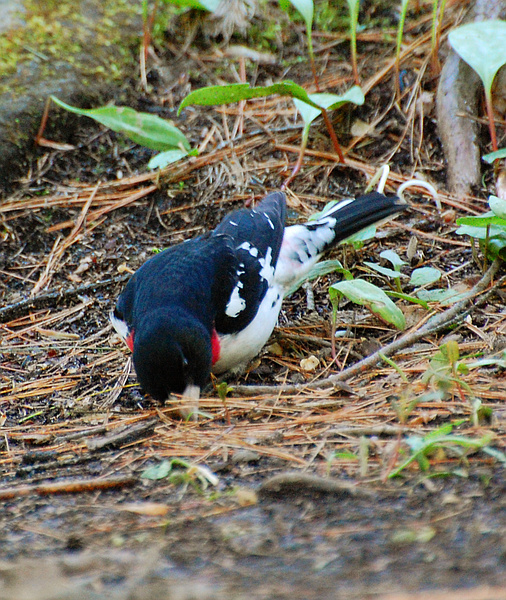
A morning at South March (part 2)
July 17th, 2014
In most of Ottawa, Rose-Breasted Grosbeaks are something you see passing through in spring and fall, but South March has a robust breeding population. I'd never seen them like this before, though: both males and females were foraging on ground--not merely on the ground, but on the trail--right in front of me.

1680x1050 wallpaper

So were they looking for food? On a cold morning like that one, it makes sense that the only insects they could find would be on the ground. Or were they looking for nest material? Or were they gritting, perhaps--eating small pebbles for their gizzards? (Some finches come right out onto roadways to do that.) It was on a later day, walking through the same woods with my husband, that I discovered the answer by kneeling down and studying the earth where a grosbeak had been foraging: someone has been scattering birdseed on the trails.
And I'm of two minds about it. On the one hand it's making for some stunning views of songbirds that usually stay well up in the trees. (That day with Michael I saw a Scarlet Tanager, of all things, come to ground!) On the other hand, it seems questionably ethical to deliberately attract birds onto trails where fast-moving mountain bikes are the norm.
The more soberly attired female:

July 17th, 2014
In most of Ottawa, Rose-Breasted Grosbeaks are something you see passing through in spring and fall, but South March has a robust breeding population. I'd never seen them like this before, though: both males and females were foraging on ground--not merely on the ground, but on the trail--right in front of me.

1680x1050 wallpaper

So were they looking for food? On a cold morning like that one, it makes sense that the only insects they could find would be on the ground. Or were they looking for nest material? Or were they gritting, perhaps--eating small pebbles for their gizzards? (Some finches come right out onto roadways to do that.) It was on a later day, walking through the same woods with my husband, that I discovered the answer by kneeling down and studying the earth where a grosbeak had been foraging: someone has been scattering birdseed on the trails.
And I'm of two minds about it. On the one hand it's making for some stunning views of songbirds that usually stay well up in the trees. (That day with Michael I saw a Scarlet Tanager, of all things, come to ground!) On the other hand, it seems questionably ethical to deliberately attract birds onto trails where fast-moving mountain bikes are the norm.
The more soberly attired female:

| ← | → |

Mustang Sallie
July 17th, 2014 at 10:28 pm
What a handsome patriotic looking bird (red, white and blue), to an American of-course. Is this bird native Canada?
Suzanne
July 18th, 2014 at 12:41 am
It's actually red, white and black :-) The bluish tint in the second picture is a photographic artifact due to the early-morning light I was taking it in. Yes, this beautiful bird is native to both Canada and the U.S., although in Virginia you would only find it nesting in the mountains.
Mike
July 18st, 2014 at 10:18 am
I was certainly glad to get a chance to see them... I agree that people should at least scatter seed near but not on the path though.